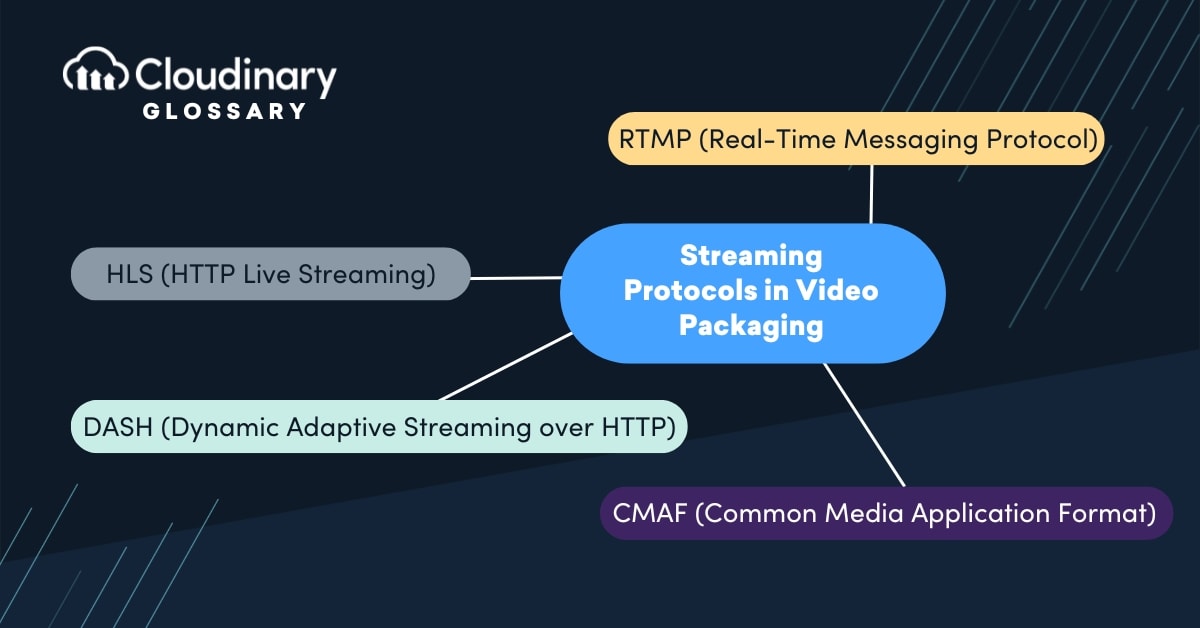
What Is Video Packaging
Video packaging, also known as video encoding or video transcoding refers to the process of preparing and formatting video files for delivery over the internet, ensuring playback across different devices, platforms, and network conditions. At its core, video packaging involves breaking the video into smaller chunks, encoding it into adaptable formats, and integrating it with video metadata to optimize its structure for seamless playback.
When you watch a video on YouTube, Netflix, or any other streaming service, you’re engaging with a packaged video. Through packaging, the video adapts in real-time to your network’s capacity, ensuring smooth streaming whether you’re on a high-speed connection or a low-bandwidth mobile network.
Key Components of Video Packaging
- Video Encoding: The process of compressing raw video files using codecs.
- Containerization: Wrapping the encoded video and audio in a “container file” format such as MP4 or MKV.
- Adaptive Bitrate (ABR) Streaming: Preparing video streams at different quality levels to adapt to varying network bandwidths.
- Integration of Streaming Protocols: Ensuring efficient delivery of video over network protocols like HLS or DASH.
The Workflow Behind Video Packaging
The video packaging process starts with raw footage and transforms it step-by-step into a streamable, optimized video file. Let’s break it down:
1. Ingesting Raw Content
Raw video footage, which is often massive in size and uncompressed, is the starting point. This file must undergo processing to become suitable for online delivery.
2. Transcoding and Encoding
Encoding is the compression stage, where the raw footage is processed using codecs (like H.264, VP9, or AV1) to reduce file size while maintaining as much quality as possible. This makes the video lighter and easier to stream over the internet.
3. Segmenting the Video
The encoded video is often split into smaller chunks, such as 2-10 second segments. These segments allow for adaptive bitrate streaming, where users can switch quality levels without interruptions.
4. Creating Multiple Bitrate Versions
To support varying network capacities, multiple versions of the video are encoded at different resolutions and bitrates, ranging from ultra-high-definition (4K) to lower-resolution (240p). This ensures the video is accessible to both high-speed fiber and slow mobile network users.
5. Integrating Streaming Protocols
Streaming protocols like HLS (HTTP Live Streaming), DASH (Dynamic Adaptive Streaming over HTTP), or RTMP (Real-Time Messaging Protocol) play a role in delivering the video over the internet efficiently.
6. Adding Metadata and Encryption
Metadata (like subtitles or playback information) and encryption layers are packaged with the video for security and additional functionality.
7. Delivering the Video via CDN
Finally, the packaged video is distributed via Content Delivery Networks (CDNs) to ensure global access with reduced latency.
How Codecs Are Used in Video Packaging
Codecs (short for compressor-decompressor) are the unsung heroes of video packaging. They are algorithms responsible for compressing video data into manageable sizes that balance quality with file size.
Popular Codecs in Video Packaging
- H.264 (AVC): One of the most widely used codecs, offering excellent quality and compatibility across devices.
- H.265 (HEVC): The successor to H.264, capable of delivering the same quality as H.264 at nearly half the file size.
- VP9: A codec developed by Google, particularly favored by YouTube.
- AV1: A next-generation codec that provides higher compression efficiency, making it ideal for 4K and 8K video packaging.
The Role of Codecs in Packaging
- Compression: Codecs drastically reduce the size of raw video, making internet delivery feasible. For instance, without H.264, a 4K video could be hundreds of gigabytes.
- Compatibility: Codecs ensure the video can be encoded in a format compatible with various devices and platforms.
- Quality Maintenance: Advanced codecs deliver high-quality video even at lower bitrates, ensuring an optimized viewing experience.
Benefits and Drawbacks of Video Packaging
Benefits of Video Packaging
- Adaptive Playback: Users can enjoy videos tailored to their network conditions, thanks to adaptive bitrate streaming.
- Efficient Delivery: Streaming protocols help reduce bandwidth usage and make delivery faster and more efficient.
- Enhanced Viewer Experience: Seamless transitions between quality levels and low buffering improve user satisfaction.
Drawbacks of Video Packaging
- Complexity: The workflow involves multiple stages, requiring skilled professionals and technology.
- Resource-Intensive: Creating multiple bitrate versions and processing high-res videos demand significant storage and computing power.
- Latency: Real-time video (e.g., live streaming) may face challenges due to the segmentation and packaging process.
- Compatibility Limitations: Certain packaged files may not work with older devices or browsers that lack updated codec support.
Streaming Protocols in Video Packaging
Streaming protocols govern how video content is delivered over the internet, ensuring smooth and efficient playback. The choice of protocol is critical in video packaging. Let’s look at some popular protocols:
HLS (HTTP Live Streaming)
- Developed by Apple and widely used for video delivery.
- Breaks videos into small chunks and supports adaptive bitrate streaming.
- Compatible with the majority of devices, including iPhones and Smart TVs.
DASH (Dynamic Adaptive Streaming over HTTP)
- An open-source counterpart to HLS, widely adopted across major platforms.
- Offers codec flexibility and supports adaptive streaming.
RTMP (Real-Time Messaging Protocol)
- Historically used for live streaming, RTMP is fast and reliable but losing popularity in favor of newer protocols like WebRTC.
CMAF (Common Media Application Format)
- A newer, more efficient solution that works with both HLS and DASH.
- Designed to reduce latency and file duplication in video packaging.

The Bottom Line
Video packaging is the unsung process behind the seamless streaming experiences we enjoy every day. By combining encoding, chunking, adaptive bitrates, and streaming protocols, it ensures that high-quality content is delivered efficiently to diverse audiences across varied devices and network conditions.
From ensuring compatibility to minimizing buffering, it’s the backbone of modern video streaming. As codecs and streaming protocols continue to evolve, video packaging is poised to become even more efficient, enabling higher resolutions, immersive formats like VR, and faster streaming speeds.


